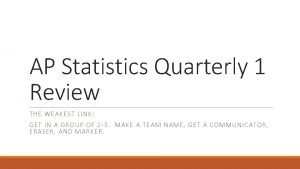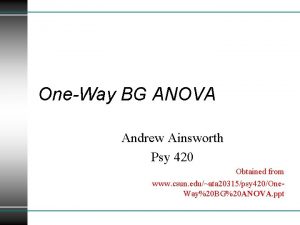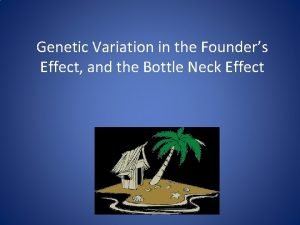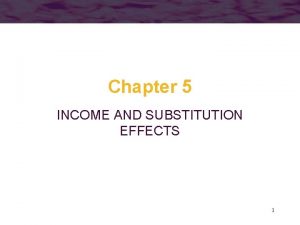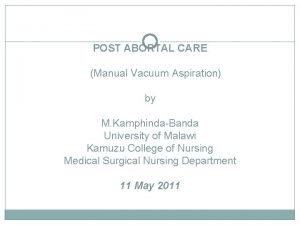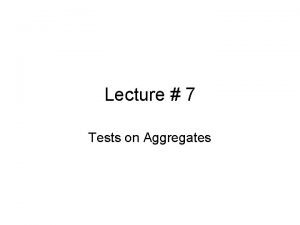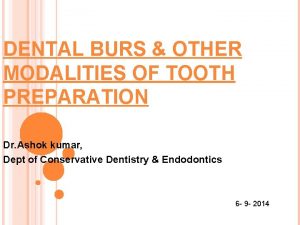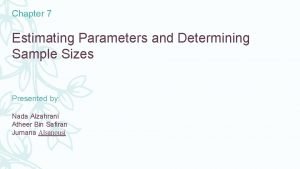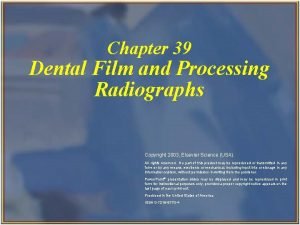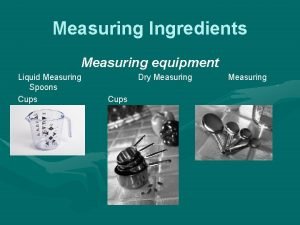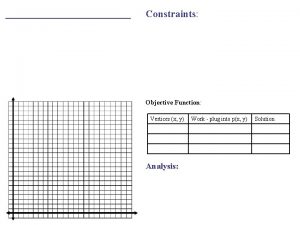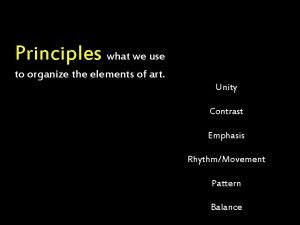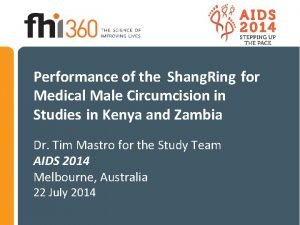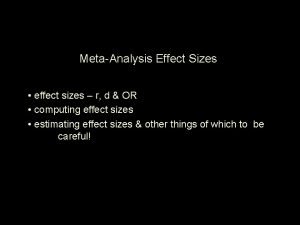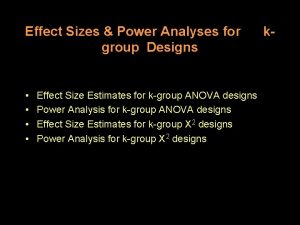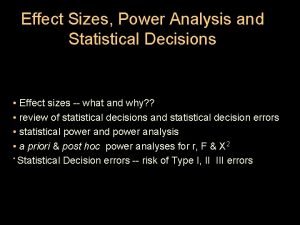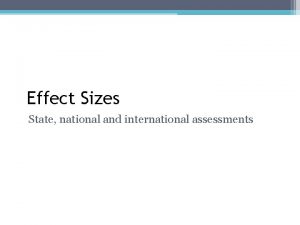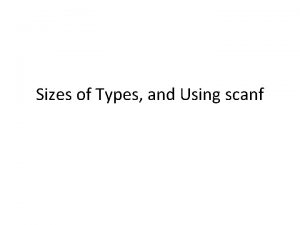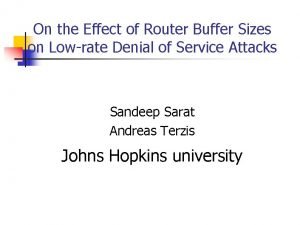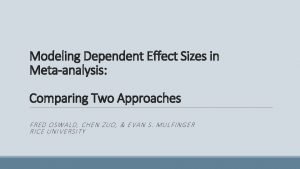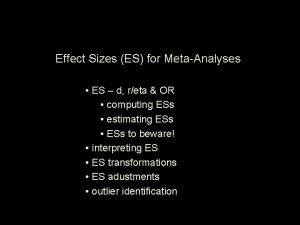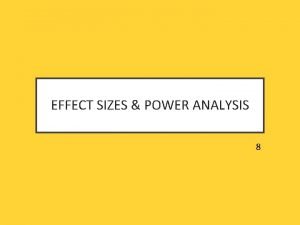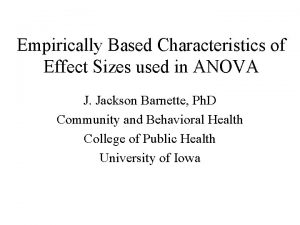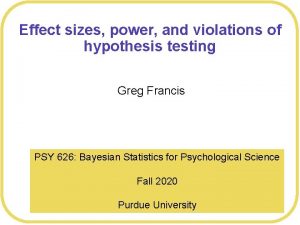Class 18 Effect Sizes Lipsey et al 2012
































- Slides: 32

Class 18: Effect Sizes (Lipsey et al. , 2012) Andrew Ho, Harvard Graduate School of Education Wednesday, November 6, 2017

Unit 1: 8) Norm- vs. Criterion-Referenced Scores • wikipedia © Andrew Ho Harvard Graduate School of Education 2

8) Norm- vs. Criterion- Referenced Scores • Criterion-referenced scores reference performance to an absolute criterion. – Proficient, Passing, “A” (assuming no curve) • When these terms describe tests, “norm-” has historically implied psychological and aptitude measurements, and “criterion-” has referred more to “achievement” tests. – This can imply differences in test design, particularly with the spread of item difficulties (more for norm-referenced tests, less for criterion-referenced tests). – But all tests can support norm- and criterion-referenced score interpretations. © Andrew Ho Harvard Graduate School of Education 3

1) Reporting Effects When you report your analyses, You must address: SIGNIFICANCE, SIGN, and SIZE Report whether you have detected an effect, or not. effect Report the direction of the effect you have the effect detected Report the magnitude of the effect you of the effect have detected. This means … report your hypothesis testing to stipulate whether the effect is different from zero in the population. This means … stipulate whether the effect is positive or negative. This means … give readers a sense of whether the effect is small, medium, or large, in context. Reporting magnitudes is one of the most tricky and important challenges to confront once you have found an effect. Ø There is a science of “effect size reporting” that addresses the substantive (as opposed to the statistical) nature of the effect. Ø The “New Statistics” (Cummings, 2014) [My related commentary in measurement. ] You can often achieve all this simultaneously, by plotting fitted trend lines for individuals who are prototypical for the population. Ø Classes on meta-analysis and power analysis address this. Ø We have one slide. © John Willett and Andrew Ho, Harvard Graduate School of Education Unit 1 d – Slide 4

Effect Sizes: Communicating the Magnitude of Coefficients Blind adherence to these guidelines is a sure sign of a lazy or inadequately trained intermediate statistician. I hesitate to even present them… From Cohen himself… When you report differences between groups, a difference of: ü. 2 st. dev. is Small ü. 5 st. dev. is Medium ü. 8 st. dev. is Large When you report relationships, a correlation of : ü. 10 is Small ü. 30 is Medium ü. 50 is Large "The terms 'small, ' 'medium, ' and 'large' are relative, not only to each other, but to the area of behavioral science or even more particularly to the specific content and research method being employed in any given investigation. . In the face of this relativity, there is a certain risk inherent in offering conventional operational definitions for these terms for use in power analysis in as diverse a field of inquiry as behavioral science. This risk is nevertheless accepted in the belief that more is to be gained than lost by supplying a common conventional frame of reference which is recommended for use only when no better basis for estimating the ES [Effect Size] index is available. " (Cohen, 1988, p. 25, emphasis added) © Andrew Ho and John Willett, Harvard Graduate School of Education Unit 1 d – Slide 5

Lipsey et al. (2012): Referencing to pre-post change © Andrew Ho Harvard Graduate School of Education 6

Overlap in distributions © Andrew Ho Harvard Graduate School of Education 7

Percent above percentiles © Andrew Ho Harvard Graduate School of Education 8

Percent above cut, binomial effect size © Andrew Ho Harvard Graduate School of Education 9



















With continuous rank data Part of a general two-sample toolkit:


Months of learning © Andrew Ho Harvard Graduate School of Education 30

Referencing to achievement gaps © Andrew Ho Harvard Graduate School of Education 31

Cost-effectiveness, cost-benefit © Andrew Ho Harvard Graduate School of Education 32
 Paul lipsey
Paul lipsey Men's shirt sizes are determined by their neck sizes
Men's shirt sizes are determined by their neck sizes How to know if an effect size is small medium or large
How to know if an effect size is small medium or large Bohr's effect in respiration
Bohr's effect in respiration Bottleneck effect
Bottleneck effect Roy's identity
Roy's identity How do you calculate mechanical advantage
How do you calculate mechanical advantage Tall size starbucks ml
Tall size starbucks ml Hyne design software
Hyne design software Size of pollen
Size of pollen 1 oz of meat looks like
1 oz of meat looks like New shiley trach sizes chart
New shiley trach sizes chart Mva cannula sizes by color
Mva cannula sizes by color Uce first grade aggregates
Uce first grade aggregates Rubber dam
Rubber dam Normal frame sizes
Normal frame sizes Live shellfish market form
Live shellfish market form Steel truss size
Steel truss size Bur blade design
Bur blade design Water seal chamber
Water seal chamber Common critical values
Common critical values What are the five steps in processing dental radiographs
What are the five steps in processing dental radiographs Pan polishing capsules
Pan polishing capsules Pediatric opa sizes
Pediatric opa sizes French size in mm
French size in mm Measuring ingredients worksheet
Measuring ingredients worksheet A carpenter makes bookcases in two sizes
A carpenter makes bookcases in two sizes Portrait resolution sizes
Portrait resolution sizes To finely divide food in various sizes by rubbing
To finely divide food in various sizes by rubbing Opposing size shapes contrasting colors
Opposing size shapes contrasting colors Shang ring sizes
Shang ring sizes Viabahn sizes
Viabahn sizes Amenities and facilities difference
Amenities and facilities difference

